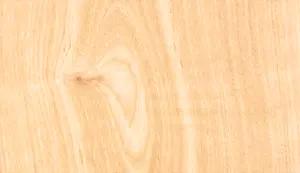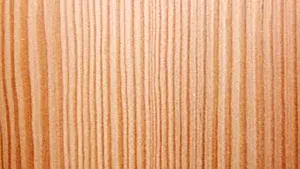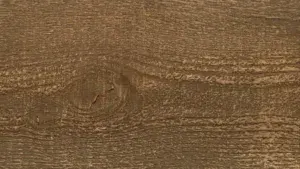American Sweetgum Lumber
- June 27, 2023
- 0 comment

American Sweetgum, scientifically known as Liquidambar styraciflua, is a hardwood tree that is indigenous to the southeastern regions of the United States. It has several distinctive characteristics that make it desirable for specific applications in the woodworking and lumber industry.
Sweetgum lumber is well-known for its unique color and appearance. When freshly cut, the wood displays a light pinkish-brown hue, interspersed with darker streaks. However, over time and with exposure to light, the wood transforms to a more attractive reddish-brown. The sapwood of the sweetgum tree tends to be narrower compared to other species and is lighter in color. The heartwood’s reddish-brown color contrasted with the lighter sapwood can create striking visual appeal in finished pieces.
One of the notable features of sweetgum is its grain structure and texture. The tree is characterized by an interlocked grain pattern, which can result in interesting and unique visual effects on the finished lumber. This also imparts a moderate texture to the wood, enhancing its natural aesthetic appeal. Despite its interlocked grain, which can make it somewhat difficult to work with, sweetgum lumber is appreciated for its versatility in a variety of woodworking applications. With its unique blend of color, texture, and pattern, sweetgum lumber holds a niche appeal for those seeking a distinctive hardwood option.
| Property | Value |
|---|---|
| Common Name(s) | American Sweetgum |
| Scientific Name | Liquidambar styraciflua |
| Distribution | Eastern United States, Mexico |
| Tree Size | 80-120 ft (24-37 m) |
| Average Dried Weight | 34-44 lbs/ft3 (545-705 kg/m3) |
| Specific Gravity | 0.54-0.71 |
| Janka Hardness | 850-1,220 lbf (3,780-5,440 N) |
| Modulus of Rupture | 11,200-18,200 psi (77.2-125.5 MPa) |
| Elastic Modulus | 1,530,000-2,110,000 psi (10.6-14.6 GPa) |
| Crushing Strength | 5,950-8,230 psi (41.0-56.8 MPa) |
| Shrinkage | Radial: 4.2%, Tangential: 7.0%, Volumetric: 11.4% |
Color/Appearance
American Sweetgum lumber typically exhibits a light to medium brown color, with occasional reddish or grayish tints. The wood can display contrasting streaks, giving it a distinctive appearance. Over time, it can darken and develop a richer patina.

Grain/Texture
The grain of American Sweetgum lumber is generally straight, but it can also be interlocked or wavy. The wood has a fine to medium texture, and it can feature irregularities like gum pockets, giving it a unique character.
Rot Resistance
American Sweetgum is not naturally resistant to decay and is susceptible to fungal attacks. Proper treatment and finishing are necessary to enhance its resistance to rot and extend its longevity.
Workability
American Sweetgum lumber is relatively easy to work with both hand and machine tools. It cuts cleanly, and it has good gluing and finishing properties. However, the presence of interlocked or wavy grain may result in some tear-out during machining.
Odor
American Sweetgum wood is generally free from any distinct odor or scent, making it suitable for applications where scent may be a concern.
Allergies/Toxicity
There are no known specific allergenic or toxic properties associated with American Sweetgum lumber. However, as with any wood, individuals with existing allergies should take precautions and wear appropriate protective equipment when working with this material.
Pricing/Availability
American Sweetgum lumber is typically available at a moderate price range. It is widely available in its native regions, particularly in the eastern United States. It is commonly stocked by many lumberyards and suppliers.
Sustainability
American Sweetgum is a sustainable choice for lumber, as it is abundant in its natural range. Proper forest management practices ensure the preservation of the species and a continuous supply of this versatile wood.
Common Uses

- Furniture: American Sweetgum lumber is often used for crafting furniture pieces such as tables, chairs, cabinets, and desks. Its attractive color and distinctive grain patterns can add warmth and character to furniture designs.
- Cabinets: The unique appearance of American Sweetgum makes it a popular choice for cabinetry. It can be used for kitchen cabinets, bathroom vanities, and other storage solutions, adding a touch of natural beauty to the space.
- Millwork: American Sweetgum lumber is utilized in millwork applications, including trim work, moldings, and architectural details. Its interesting grain patterns can enhance the aesthetics of interior spaces.
- Veneer: The straight grain and attractive color of American Sweetgum make it suitable for slicing into veneer sheets. These thin layers of wood are commonly used for decorative purposes in furniture, cabinetry, and interior design.
- Paneling: American Sweetgum lumber can be used as paneling for walls and ceilings, creating a warm and inviting atmosphere. The wood’s natural beauty and grain patterns can add visual interest to living spaces.
- Flooring: American Sweetgum lumber can be milled into flooring planks, providing a durable and visually appealing flooring option. Its unique color variations and grain patterns can create a distinct look in residential or commercial settings.
- Specialty items: American Sweetgum is often used for specialty woodworking items such as turned objects, including bowls, vases, and decorative pieces. Its fine texture and interesting grain patterns make it a sought-after choice for these unique creations.
- Musical instruments: American Sweetgum lumber is occasionally used in the construction of musical instruments such as guitars, drums, and woodwind instruments. Its acoustic properties and aesthetic appeal can contribute to the instrument’s sound and visual appeal.
Frequently Asked Questions
- Can American Sweetgum lumber be stained? Yes, American Sweetgum lumber takes stain well and can be finished to achieve desired colors and appearances. However, it is advisable to conduct test samples to ensure desired results.
- Is American Sweetgum suitable for outdoor projects? American Sweetgum lumber is not naturally durable and is not recommended for exterior use without proper treatment and protection from the elements.
- Does American Sweetgum have any notable grain patterns? American Sweetgum can exhibit interesting grain patterns, including interlocked or wavy grain. These characteristics contribute to its unique visual appeal.
- s American Sweetgum lumber easy to work with? American Sweetgum lumber is generally considered easy to work with, as it cuts cleanly and has good machining properties. However, care should be taken to prevent tear-out due to its grain irregularities.
- Is American Sweetgum a sustainable wood choice? American Sweetgum is considered sustainable, as it is plentiful in its natural range and can be responsibly managed through forest conservation practices.














Leave your comment